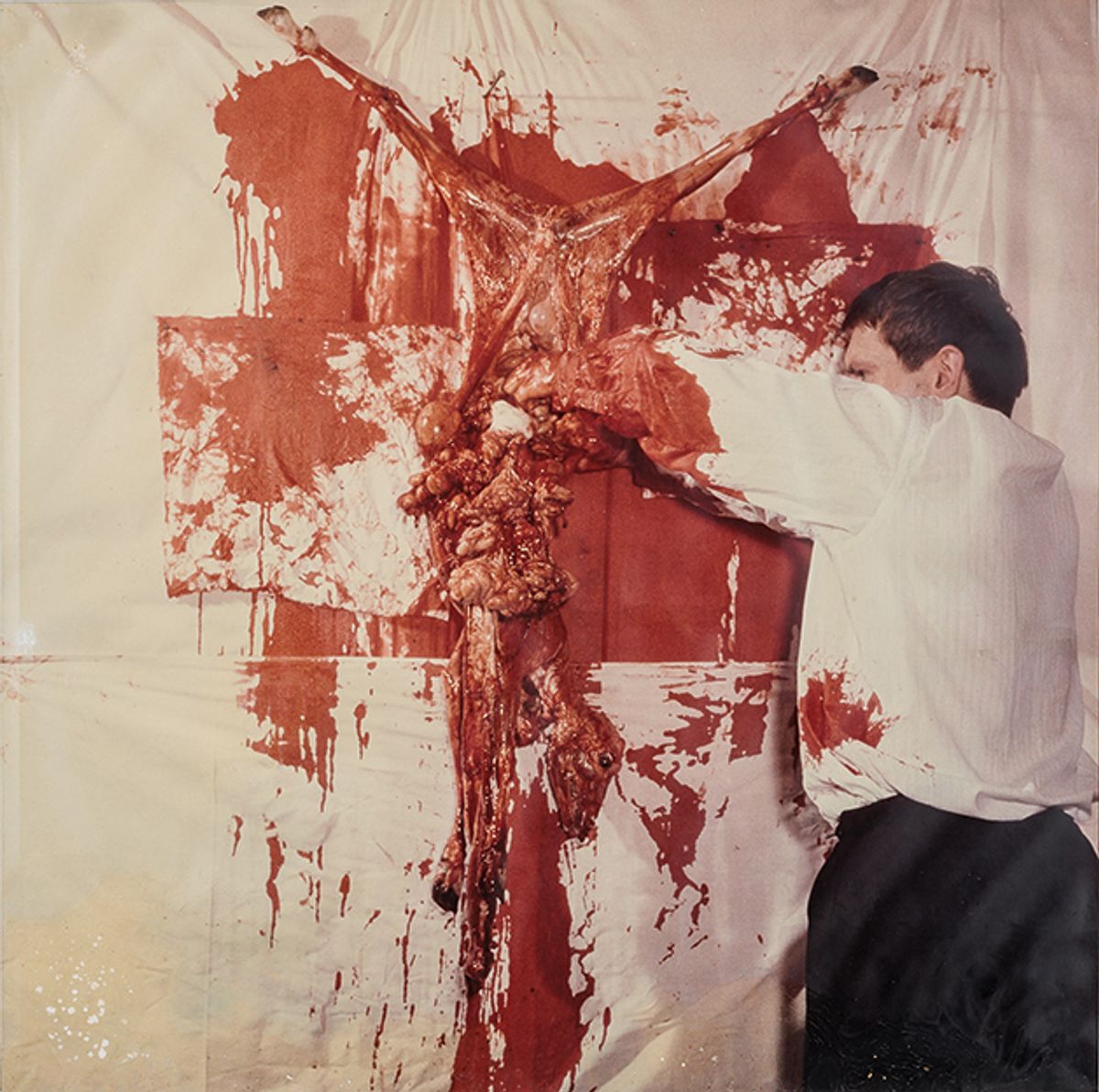A museum devoted to Vienna Actionism that opened in March has met some criticism and controversy—not the first time that Austria’s most important post-war art movement, renowned for extreme performances, has triggered a disapproving response.
The new Vienna Actionism Museum was initiated by a group of private collectors “who wanted to give Actionism the attention it deserves” and to bring it “out of its shadowy existence”, the opening press statement said. The museum focuses on the period from 1957 to 1973 and boasts the world’s largest Actionism collection—17,000 exhibits—which it intends to expand.
These artists explored the human body without taboo
One of Vienna Actionism’s four main protagonists, Günter Brus, died in February, having outlived the other three: Hermann Nitsch died in 2022, Otto Muehl in 2013 and Rudolf Schwarzkogler in 1969 after a fall from a window. In a repressed Austrian society in denial about its then-recent Nazi guilt, these artists explored the human psyche and the human body without taboo.
‘Degrading’
Performances featured copious bodily fluids—most notoriously, in a 1968 show at the University of Vienna, when Brus cut himself, masturbated, vomited, urinated and defecated while singing the Austrian national anthem. Even the sensationalist Viennese tabloids struggled to find a fitting response. Brus was prosecuted for “degrading symbols of the state” and fled to West Berlin to escape imprisonment.
Criticism of the new Vienna Actionism Museum has focused primarily on its treatment of Muehl, who was convicted of child sexual offences including rape in 1991 and served seven years in prison. People who lived as children in the commune Muehl founded in the 1970s have protested against what they see as the museum’s glorification of a criminal. Andy Simanowitz, who was one of these children, told the broadcaster ORF that the museum is “insensitive and hurtful”.
We must show this art to learn from the past
“These are people who grew up with trauma,” says Julia Moebus-Puck, the museum’s director. “I can completely understand them. What bothers me is that they are demanding that Otto Muehl shouldn’t be shown at all. I am of the opinion that we must show this art to learn from the past.”
Art critics reviewing the museum grappled with a familiar dilemma: how should posterity treat dead, pioneering artists whose lifetime transgressions were and remain beyond the pale?
Neither cancellation nor canonisation
“Obviously, cancel culture is not a helpful response, but neither is art-historical canonisation,” wrote Paul Jandl in his review in the Swiss daily Neue Zürcher Zeitung. His colleague Hannes Hintermeier at Germany’s Frankfurter Allgemeine Zeitung lamented the museum’s failure to give sufficient context.
Moebus-Puck says the curators made a conscious decision to avoid labelling individual works to give visitors space for an immediate sensory response. Audio and digital guides and a free booklet handed out at the museum provide comprehensive context, “but we have noticed people want direct explanations”, she says. “We will make some amendments.” These will include wall texts with the biographies of the artists, she adds.
The museum aims to mount one or two temporary exhibitions per year and to become a hub for Actionism research and a lender to shows worldwide.


